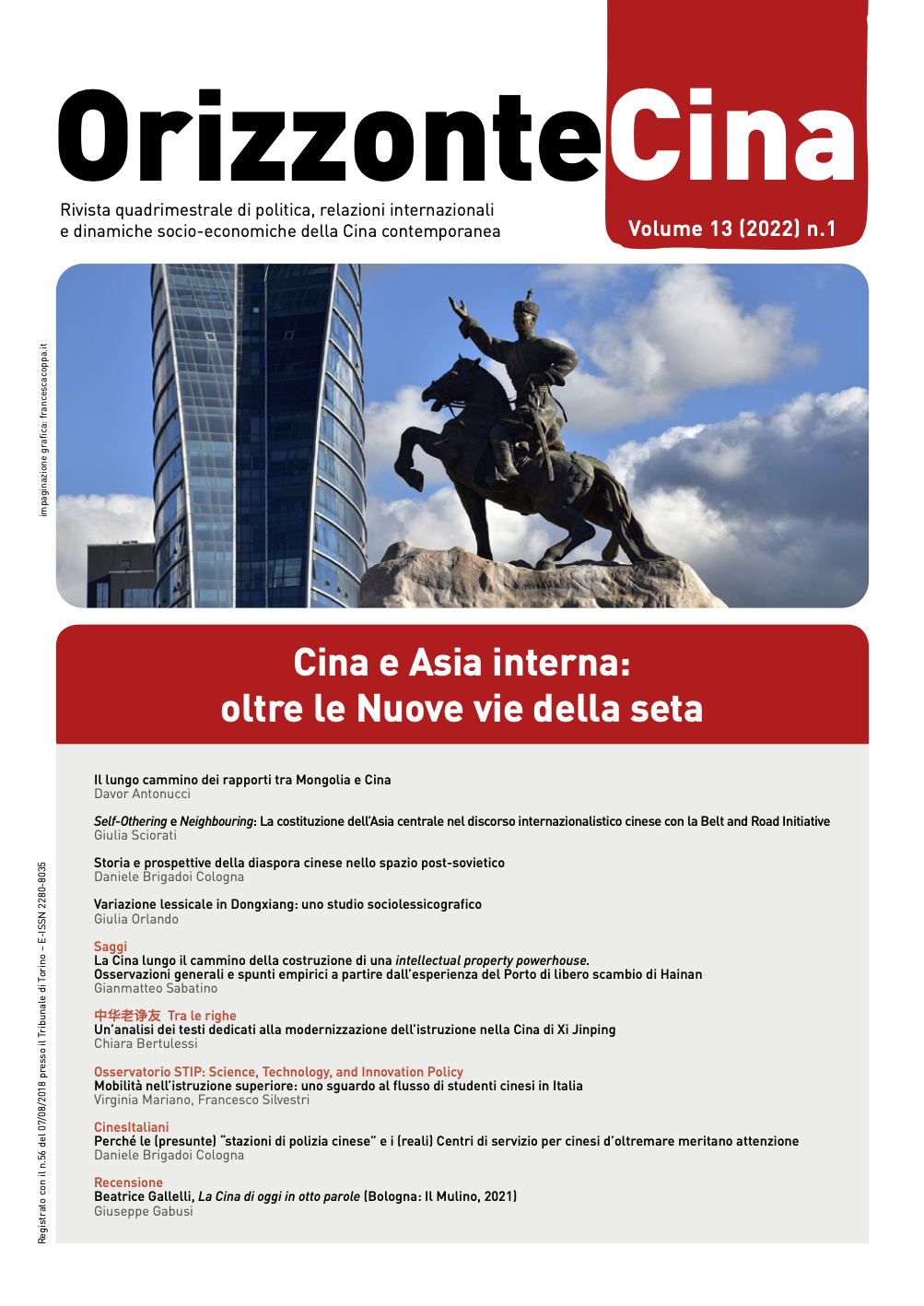Vol. 13 No. 1 (2022): China and Inner Asia: beyond the New Silk Roads

The launch of the Belt and Road Initiative (BRI) in 2013 allowed China to extend its influence in Inner Asia, while counterbalancing aspirations for a zone of political and economic integration promoted by Russia - the Eurasian Economic Union, EAEU - with the clear intention of re-establishing its influence in the post-Soviet space. Inner Asia is therefore today the arena in which various actors, including the SCO (Shanghai Cooperation Organization), the European Union through the Eastern Partnership, but also NATO and the USA, try to expand and affirm their influence. Although BRI’s main objectives are the interconnectivity of transport, the financing of infrastructures, and the integration of financial markets, the actions undertaken also have profound implications in the social, environmental, and even linguistic fields. Up to now, people-to-people projects, which are also a pillar of the BRI, have received little attention in the allocation of funds, almost entirely destined to support economic and infrastructural interventions. Ten years after the launch of the initiative, it is time for a reflection on how these projects impact local communities and minorities which in Inner Asia also have cross-border relevance, as in the case of Uighurs, Kazakhs, or Tajikis present both in China and in neighboring countries. The ever more pervasive Chinese influence in these territories, for decades part or satellite of the Soviet Union, as in the case of Mongolia, has had important, but not unpredictable, repercussions also in the field of language policies and education. The religious dimension, which has historically served as a glue in these areas, effectively connects cross-border minorities - Mongols, Uighurs, Tajiks - outlining spaces for action and reaction to the increasingly accentuated control policies of the Chinese authorities.

